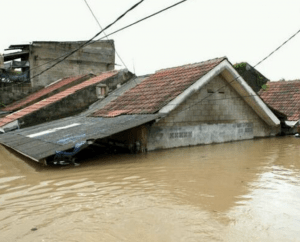https://www.theatlantic.com/technology/archive/2017/08/why-cities-flood/538251/ REFLECTION

A simple illustration I made to demonstrate how tall the floods in Jakarta are, ruining cars and houses.
REFLECTION:
The article stated that “Like bridges or skyscrapers designed to bear certain loads, stormwater management systems are conceived within the limits of expected behavior—such as rainfall or riverbank overrun events that might happen every 10 or 25 years. When these intervals are exceeded, and the infrastructure can’t handle the rate and volume of water, flooding is the result.”
I believe that the Houston floods situation is similar to the flooding situation in Jakarta, Indonesia. “It’s rainfall that poses the biggest threat.” It is both the rainfall and infrastructure that does not allow the water to leave. Back home in Jakarta flooding was common every year during 2010-2014, with high rainfall, the land is not able to absorb water, incorrectly manage spatial systems, deforestation, and littering. The average highest flood is 60inches tall, and every year there is a 10-15inch tall flood.
I think there are a lot of ways that we can all start helping reduce the chances of floods. I agree with what Thomas Debo stated in the article, how stormwater management, takes issue with pavement reduction as a viable cure for urban flooding. “We focus too much on impervious surface and not enough on the conveyance of water.” Even though bigger changes like urban planning are not in our control, we must help to filter and reuse water, reduce littering, and be more cautious on how we use water.
230 words
![[ sustainable systems ] Houston’s Flood Is a Design Problem](https://portfolio.newschool.edu/saskiawulandiarti/files/2019/10/Screen-Shot-2019-10-17-at-9.40.03-AM.png)
